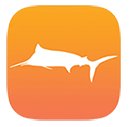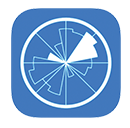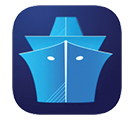A team of emerging leaders in Australia's fishing and seafood sectors set out to identify how smartphone apps and digital technologies are benefiting users
By Luke Cordwell, Jaime McAllister and Cassandra Pert
From enhanced user experiences to digital catch reporting, the creation and adoption of mobile applications (apps) presents a significant opportunity across the seafood sector.
Recreational fishers can check the day's forecast on the RipCharts app before heading out on the boat. Commercial fishers can log their catch on the New South Wales Fisheries' FishOnline app. Seafood consumers can consult the FRDC's Status of Australian Fish Stocks Reports app before choosing what type of fish to buy.
The functionality and diversity of apps related to fisheries and seafood continues to evolve. However, this boom in mobile technology has created an overwhelming amount of choice and information. Apps that have the potential to greatly benefit seafood communities risk being lost in the mass of information available.
As members of the 2020 National Seafood Industry Leadership Program's Port Lincoln cohort, we set out to investigate this issue. We wanted to shine a light on the range of apps out there and how they can be integrated into everyday activities. We also wanted to uncover what makes a good seafood app and why many apps, despite developers' best intentions, remain underutilised.
Our initial research involved a comprehensive search of various web and app store databases, which revealed more than 100 products directly related to or tailored for the fishing and seafood communities. Most of these apps are targeted at the recreational sector, with rapid uptake of digital technology among these users. There has also been a strong uptake of generic apps geared towards increasing productivity in the commercial and post-harvest sectors, such as accounting or word processing apps.
Our research revealed the large scale of the app landscape and how difficult some apps were to find, so we created a database of apps directly related to the seafood sectors across Australia – accessible using the QR code.
We also spoke with a range of fishers and individuals within seafood supply chains to help understand which apps they use and how these apps help them in their day-to-day lives. The team reached out for additional user experiences through a survey, first advertised in the December 2021 edition of the FRDC'S FISH magazine, to gain an even broader perspective on app use across seafood sectors.
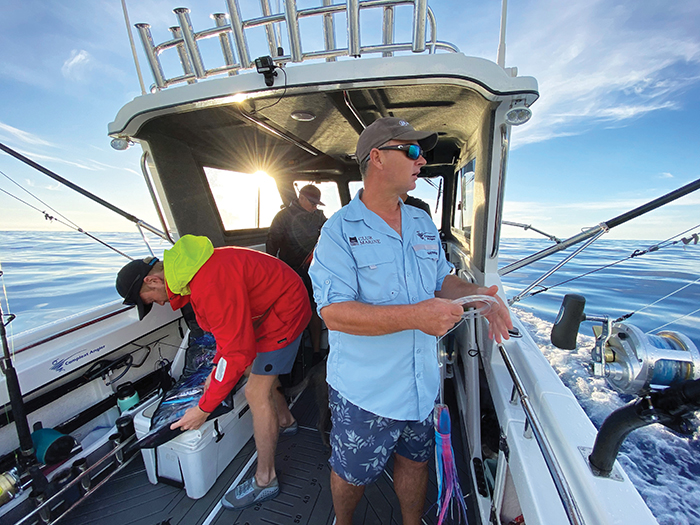
Al McGlashan:
For recreational fisher Al McGlashan, apps are a great tool to enhance his experience out on the water. Before he heads out, he consults RipCharts, Windy and Buoyweather for the latest forecast, as well as checking any new fisheries regulations or zoning information on the NSW Fisheries app. He can also keep track of who is out on the water with the MarineTraffic app for real-time information.
Recreational fishers
Social media apps were the most used among the recreational fishers interviewed. Facebook, Instagram and Messenger all allow recreational fishers to share fishing stories and images of their latest catch. For some people, such as advocates of Tuna Champions, social media helps promote advocacy work and educate the public and other recreational fishers about best-practice methods.
Apps are also helping to improve safety on the water. As recreational fishers move further offshore, a mobile device linked to a SatSleeve Hotspot through the SatSleeve app turns a regular phone into a satellite device to improve communication on the water.
A key message from the interviewed recreational fishers was that apps help them make more informed decisions. By allowing users to review multiple sources of information in a simplified form, apps can greatly enhance the fishing experience.
Fishbrain is an app that tries to do just this. Used by 1.6 million recreational fishers worldwide, Fishbrain integrates weather forecast data, catch information from other users, recommended catch times and bait for target species in an area, combined with a social media news feed and the ability to stay up to date with the latest fishing efforts of others in your area.
Apps are also making participation in citizen science projects easier for recreational fishers. The Tackle Box app, developed by the Australian Recreational Fishing Foundation, provides fishers with a range of resources to improve their fishing experience, and allows them to submit catch information to inform citizen science projects.
Commercial fishing and aquaculture
For Tasmanian commercial fisher Ben Allen, the Tasmanian Government app FishPort has become a key part of his fishing activities. FishPort allows Allen to track his commercial catches in real time, ensuring that his catch is compliant with quota limits. In recent years, Allen has also become a big supporter of communication apps, such as Zoom, which allow him to stay connected with family while he is out at sea.
In the commercial sectors, apps are changing how some operations do business. With the creation of Microsoft Power Apps, businesses can build their own apps tailored to their specific activities. For example, aquaculture company Tassal has built multiple in-house apps to digitise operational activities and build its 'smart farm' vision. This has given managers greater visibility over operations, with all data recorded and available in real time.
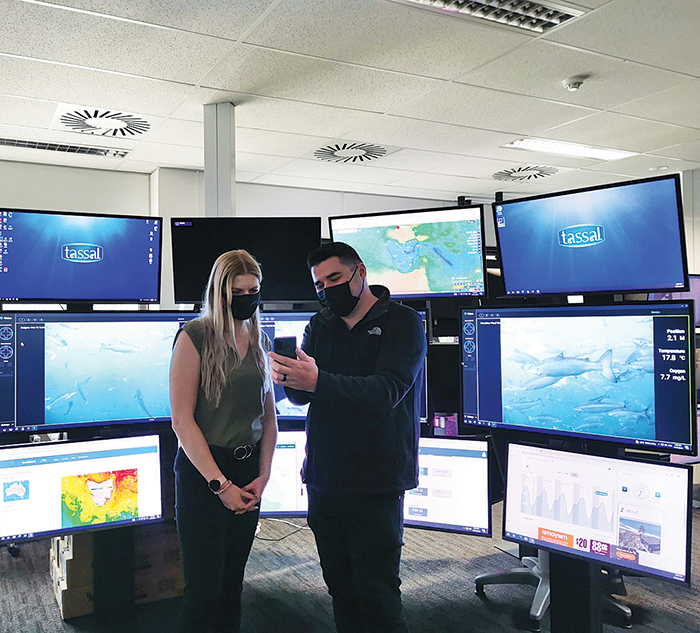
Fisheries regulators are also increasingly moving towards the use of digital tools. Most Australian jurisdictions use apps for reporting certain commercial fishing activities. This trend is likely to continue as catch reporting apps provide regulators and fishers with real-time information, helping decision-making and business planning.
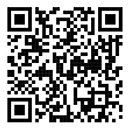
Scan the code below to access the database of apps directly related to the seafood sectors across Australia – accessible using this QR code, or visit https://airtable.com/shrJnFoU3AwdSI3cD

What makes a good app?
Functionality and ease of use were overwhelmingly reported as key characteristics of a good app from the people interviewed. For most users, an app must make their activities more efficient, allowing them to spend more time fishing – whether as a sport, leisure activity or a job.
Many users indicated that they are much more likely to engage with an app where information is shared both ways. Some users noted that they are hesitant to use apps that require lots of information from the user. They are more likely to continue using an app when they can see an outcome from the information they provide.
A good app should also provide information at a fine enough scale to make it relevant to an individual user (and their specific fishing spot). This is particularly relevant to apps that provide weather forecasts and information on local environmental conditions.
But beyond the characteristics of the app itself, a good seafood app is one that people actually use. With so many apps available, the potential value of a seafood app is often tied to its marketing and engagement strategy. Whether through the use of sector champions, an advertising campaign, links to existing products or businesses, or direct extension activities with the core market, a successful app must break through the noise of digital technologies to engage the user.
We hope our work will assist in these efforts to spread the word about some great apps that could benefit the seafood community.
Apps and connected digital technologies have the potential to revolutionise how we fish: to make our operations safer and more efficient, enable more informed decision-making, improve the fishing experience and increase the traceability of fish. This makes app awareness and digital literacy more important than ever before. f
More information
Cassandra Pert, cassandra.pert@awe.gov.au
FRDC RESEARCH CODE
2017-003




